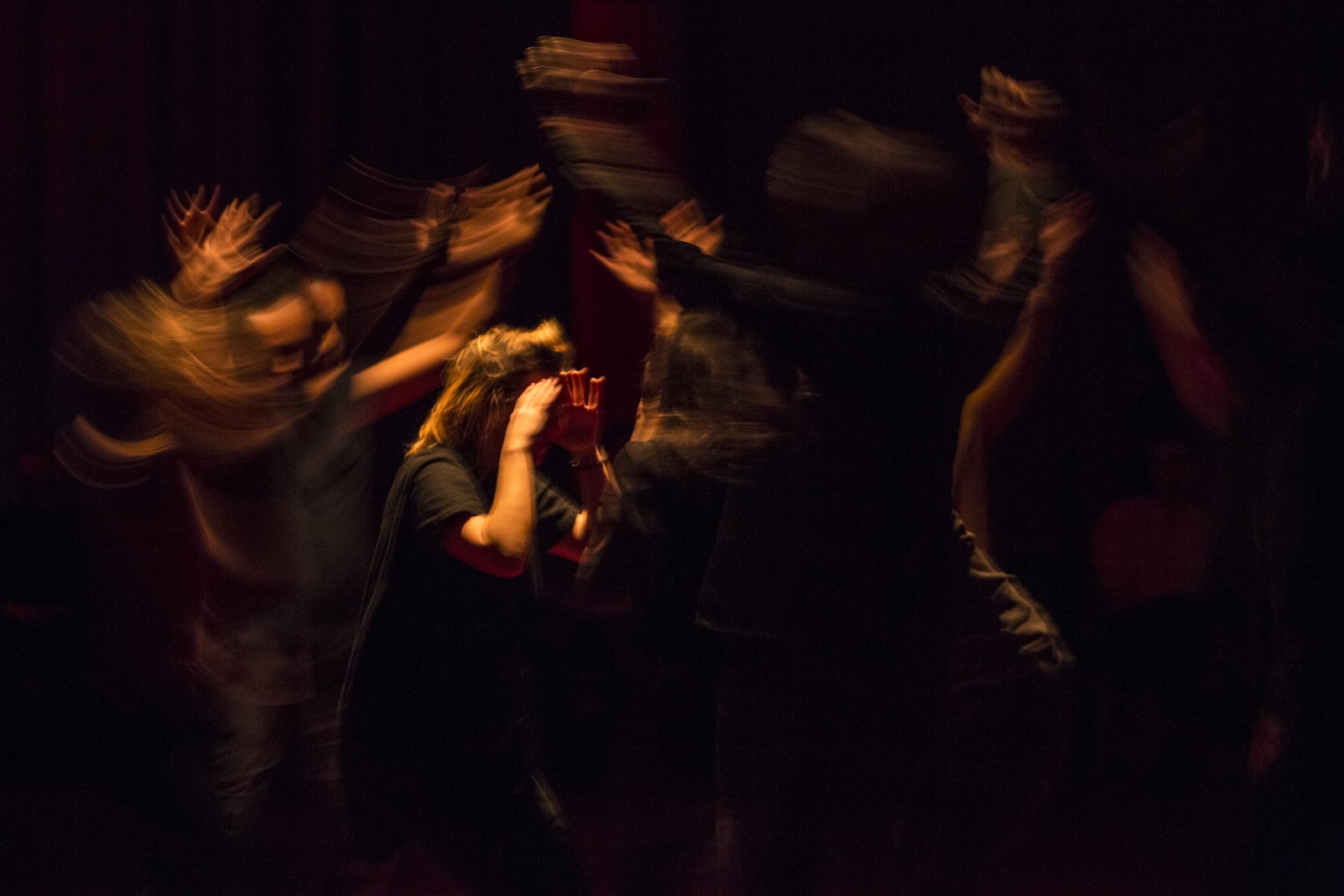If you’ve ever been in an acting class, a group-encounter session, a sensitivity training, or kindergarten, you’ll feel right at home in The Fever. Even if you’re by nature standoffish, an inveterate skeptic, or a willful wallflower, you might still have an interesting, unobjectionable time. But as you’ve likely heard, you’ll be in the herd—one of 60-some folks seated on four sides of a scarlet stage who are coaxed onto that floor to move, gesture, touch, and otherwise relate.
Billed as an experimental theater event “created in complete collaboration with the audience,” The Fever is facilitated by five actors. Two of them, Abigail Browde and Michael Silverstone, dubbing themselves 600 Highwaymen, wrote and directed it. And despite the free-flowing, nonlinear, and seemingly spontaneous situations audience members participate in, the work as a whole is very much structured, with a solid underlying dramaturgy and some pretty amazing sound and light cues.
Click to read my colleague Beatrice Loayza’s review.

The point becomes apparent early on. We are being invited to practice community, cooperation, cohesion. We are being welcomed to rehearse empathy, trust, ease with strangers. We are, very possibly, accessing something human and communal in ourselves that we have literally lost touch with. As human animals, we have as much capacity to accept and connect as we have to fight or flee. We just keep forgetting how the former feels. The Fever is meant to remind us.
I am ordinarily averse to audience participation of any sort, so I went knowing my limits would be tested. I was soon impressed, though, by the leaders’ sensitivity and skill, and how gently they overcame my default reluctance. In short order, they got all of us out onto the floor—including myself, to my surprise, not ill-at-ease among them.
Because my taste runs to shows with actual scripts with words, I found The Fever’s lack of basic elements like plot, character, conflict, and theme unsatisfying as a theatrical experience. When a work of theater is good, it stays with me. And I left doubting this one would.

But it’s days later now and I’m wondering: Did something in my subconscious get reset or reawakened somehow? Was I coached to reaccess something in our species history I had been opting out of? I never had an aha moment when I could feel my guardedness being let go—when I suddenly remembered in my body, Wow I belong to the human fam. If it happened it happened so gradually and subliminally I did not know it was happening.
Running Time: 75 Minutes
The Fever plays through November 4, 2018, at Woolly Mammoth Theatre Company – 641 D Street NW, Washington, DC. Tickets can be purchased at the box office, by calling 202-393-3939, or online.
The Fever is fully accessible to people with mobility restrictions. For information call the box office at 202-393-3939.




